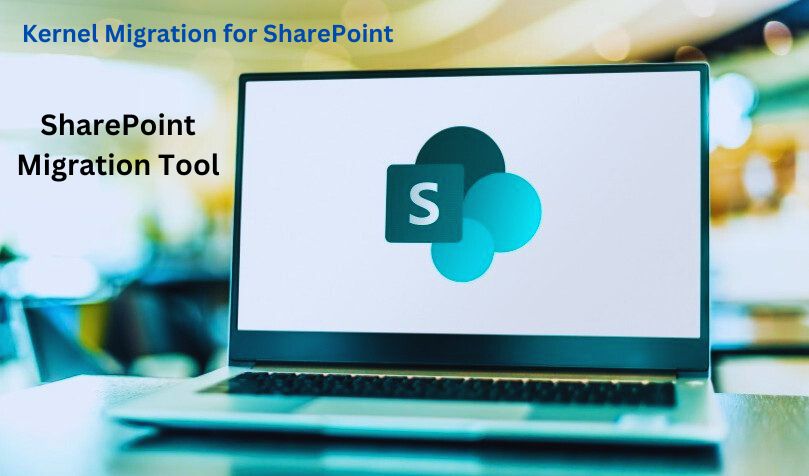
SharePoint Data Migration Simplified: Best Practices for a Smooth Transition
February 24, 2025
SharePoint data migration is a critical step in upgrading an organization. If improperly done, it could lead to data loss, downtime, or access issues. When done correctly, a proper approach minimizes the gap during which the organization experiences these issues.
This guide to data migration activities will share the best practices for SharePoint migration and expound on the importance of a good tool to expedite data transfer.
Why SharePoint Data Migration Is Necessary
Organizations use SharePoint for document management, collaboration, and workflow automation. Over the years, they may need to transfer their data because of:
- Perhaps upgrading to a newer version of SharePoint
- Merging disparate SharePoint environments
- Moving SharePoint from on-premises to a Remote server
- Restructuring of business units or departments
A proper SharePoint data migration reduces its impact on business processes, maintains data integrity, and enhances system performance.
SharePoint Data Migration Challenges
The process of migrating data is not cut and dry. Most organizations face several common challenges when migrating between SharePoint systems.
1. Risk of Data Loss
Any files that are mistakenly not transferred might be lost for eternity. Missed files that should have been migrated could lead to missing documents or folders.
2. Downtime and Business Disruptions
Unplanned migrations invariably lead to prolonged downtimes. Employees' inability to access critical files directly hampers productivity.
3. Issues in Permissions and Access
Permission settings are sometimes not migrated correctly. This can expose the system to security risks or prevent the accomplishment of workflow direction.
4. Large Volumes of Migration
It generally takes time to move terabytes of data. Without diligence from a SharePoint data migration tool, the entire process remains slow and painful.
5. Loss of Metadata and Versioning
Metadata within SharePoint files may include author name, timestamp, version history, and so on. If not transferred properly, this information could be lost.
A strategic approach as well as reliable migration tools are required by organizations for overcoming these challenges.
Best Practices for Smooth SharePoint Migration
Best practices can prove beneficial in making the migration from SharePoint to SharePoint smooth and efficient.
1. Evaluate and Analyze Current Data
Assess the current SharePoint environment before migrating. Identify:
- Files which are redundant or obsolete to delete
- Essential documents that must be given priority
- Sensitive data compliance requirements
That streamlines the migration process by reducing unnecessary transfer of data.
2. Formulate a Clear Migration Plan
Well layout plan ensures migration could be successful. It should have the following in your migration plan:
- Goals and Expected Results
- Migration timelines and deadlines
- Team roles and responsibilities
- Contingency plans for potential issues
Proper planning minimizes errors and speeds up migration.
3. Choose the Right SharePoint Data Migration Tool
Using an appropriate professional SharePoint data migration tool reduces the complexity that:
- Automatizes the transfer of data.
- Maintains metadata, permissions, and structures of a full file.
- Reduces manual errors and inconsistencies.
Find a bulk data transfer and real-time tracking-supported migration tool.
4. Conduct Tests Before Migration
Just before transferring all data, perform a pilot run. Move small files only for the following verifications:
- Integrity and completeness of files
- Permission settings
- Load time and performance
By testing the system to identify potential problems before the whole migration.
5. Ensure Data Security During Migration
To ensure maximum security under business data migration, protect sensitive information by doing the following:
- Encrypt the files in transit
- Keep RBAC intact
- Backup regularly before migration
This could help with unauthorized access and compliance with data provisions.
6. Monitoring the Migration Process
Upon the initiation of migration, monitor the real-time progress and keep records of:
- Transfer rate and success ratio
- Any failed or skipped files
- Processing system performance
Prompt troubleshooting means being able to prevent greater problems down the road.
7. Validating Data After Migration
Following the full completion of migration, a thorough validation must be carried out to ascertain from a physical point of view whether or not:
- All files and folders are transferred correctly
- User permissions and access settings are preserved
- Metadata and version histories are maintained
Correct any mistakes found immediately.
Choosing the Right SharePoint to SharePoint Migration Tool
The SharePoint to SharePoint migration tool performs smooth and automated migration. Such tools would include:
- Easy setup – A simple interface with easy navigation for setup within minutes
- Scalable – Capable of migrating large volumes at a reasonable speed
- Built with security features – Encryption and access control to ensure the protection of reasonable files
- Automation capabilities – Less manual effort is involved to speed up the migration
The selection of the right tool becomes a walk in the park with a minimum of downtime.
Post-Migration Best Practices
The migration process cannot be considered complete unless the new system operates efficiently. This includes optimizations for your new SharePoint environment:
1. Training Employees on New System
Emphasize educating users regarding the new functions, access controls, and any potential changes in workflows to facilitate easy adoption.
2. Improve SharePoint Performance
Tweak the settings to lessen load time and enhance user experience. Get rid of dated files and set up document libraries wisely.
3. Schedule Routine Audit
Keep an eye on the performance and security settings of the system post-migration. With regular audits, early identification and rectification of potential issues become possible.
Conclusion
Sufficient planning into SharePoint Migration ensures minimum interruption in the business proceedings. The key to enabling a smooth and efficient migration process is the right SharePoint SharePoint migration tool.
Kernel Migration for SharePoint is one such reliable migration tool. It makes SharePoint easy for users by automating the data transfer while maintaining metadata integrity. Businesses can easily, and confidently transfer SharePoint with the best practices and the right tools in place.
Guidelines have been spelled out to facilitate the seamless, secure, and efficient transfer of your SharePoint.
Leave a Reply
You Might Like Also












